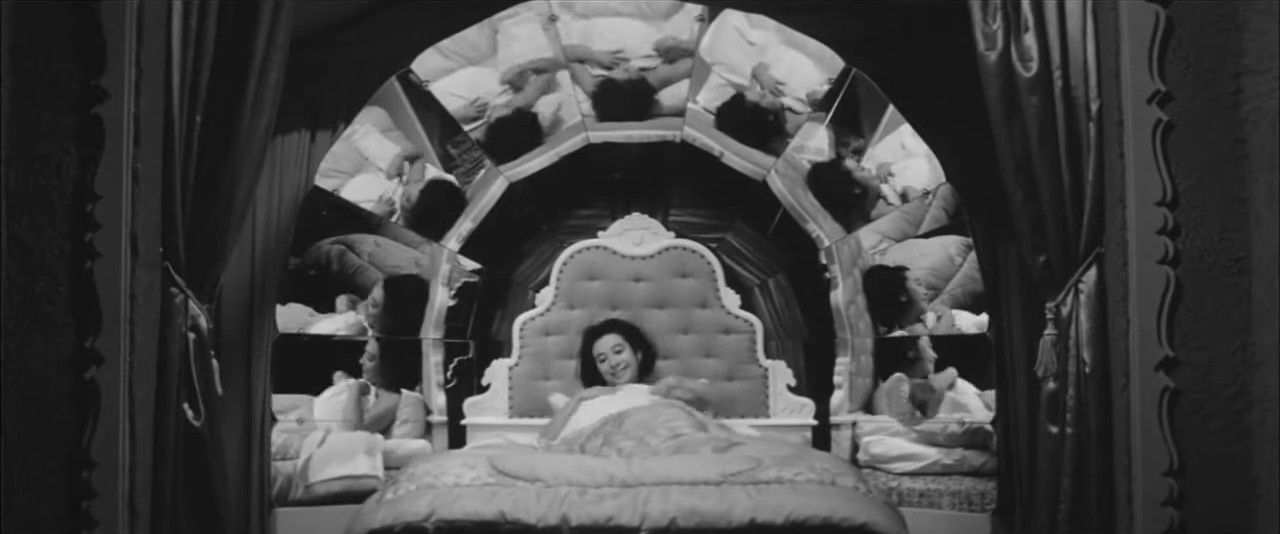Kyoko Kishida’s smile is a nightmare.
There is one Japanese word that describes the screen persona of Tsutomu Yamazaki perfectly. “Nihiru”, derived from English “nihilistic”, means “cool-headed but decadent, free from moral constraint and conscience, sometimes ruthless, and sexy”. Yamazaki was a king in this department. In BRAND OF EVIL (悪の紋章, 1964), he plays a man who transforms himself into Devil. In the final shot, he doesn’t even have the physical presence.
Based on the novel of the same title by Shinobu Hashimoto, BRAND OF EVIL tells a story of a man who is on revenge spree, a total annihilation. Kikuchi (Tsutomu Yamazaki) was an enthusiastic and brilliant detective in the Tokyo Metropolitan Police, but his enthusiasm backfired on him. A naked young woman’s body was found floating on the Tama river and he asked a wrong question one too many. Yakuza played him for a sucker and he was framed for drug trafficking. After three years in prison, Kikuchi is determined to destroy all the people associated with the frame-up. His revenge is sadistic and brutal. He makes no exception. Along the way, he discovers the truth about the murder three years ago.
It’s a dark, cynical, morbid story about heinous people. Keiji Sata plays Takasawa, a young business tycoon whose despicable acts of violence would definitely make you sick. Setsuko, played by Michiyo Aratama, is a mysterious, beautiful woman whose life accidentally intersects with Kikuchi’s. Is she a femme fatale, or a sweetheart? Kyoko Kishida plays Mitsue, Takasawa’s wife. Her smile is a nightmare.
Some critics found this story “far-fetched”. Yes, there are some plot holes you can drive a truck thorough and convenient coincidences to force the truck go even further. But this is not a typical detective story. If you are looking for a standard whodunit with a perfect solution, there isn’t any in this movie. This is a fantasy. Or a nightmare.
Hiromichi Horikawa and the cameraman Yuzuru Aizawa experiments with stylized compositions, breathtaking light and shadows, and gloomy acidity. Especially the scene between Kikuchi and Setsuko on the deserted beach (ethereal location photography at Kuju-kuri hama) is haunting. It’s one of those images that make you realize the Ocean leads to the Other Side.
A series of flashbacks creates labyrinthine horror. Freeze frames (photos) of Takasawa murdering his father-in-law are not only the evidence of the crime, but also the evidence of the lowest common denominator of human ugliness.
Its gloomy cynicism may be humorless and not as entertaining as Nikkatsu Actions, but twisted perspective of the world is surely fantastic.

